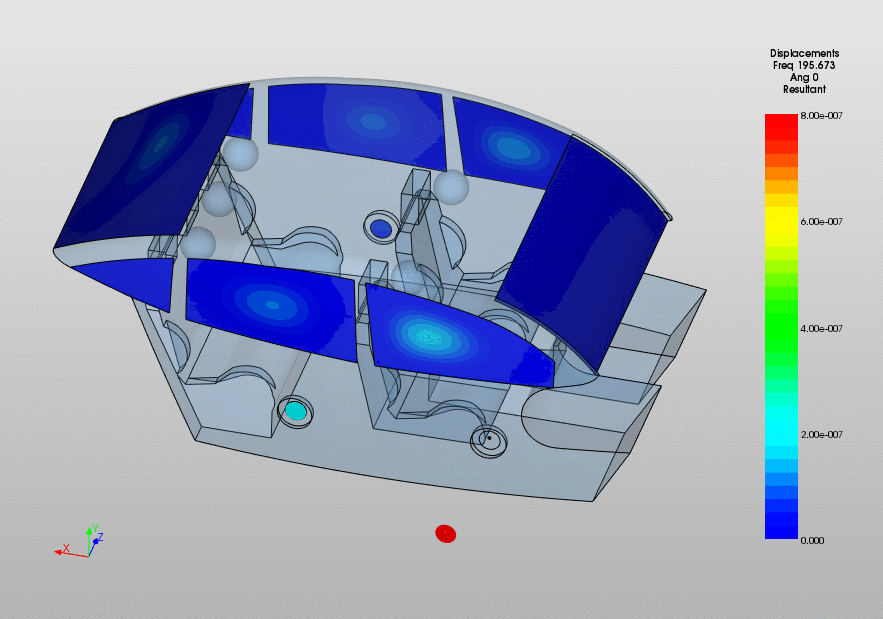Effect of Windows
Adding windows to the model as mechanical entities that can be set into vibration under the influence of the coupled internal air. The model is not intended to be super accurate - this would be expensive to achieve given the complexity and variation in the mounting conditions in addition to the precise material parameters of the toughened glass. The idea therefore is to observe the kind of effect on the pressure field at the reception locations within the car.
Graph Showing Effect of Windows at a Listener Position in the Car
 The windows are clamped at the edges forcing a mechanical bending resonance causing anomalies in the frequency response. In reality, the windows would have a less determinate boundary condition and may have a lower frequency pistonic mode where the pane and suspension act as a simple resonator. The flexible boundary would probably add significant mechanical loss to the system.
The windows are clamped at the edges forcing a mechanical bending resonance causing anomalies in the frequency response. In reality, the windows would have a less determinate boundary condition and may have a lower frequency pistonic mode where the pane and suspension act as a simple resonator. The flexible boundary would probably add significant mechanical loss to the system.
The bending modes appear to affect the frequency response producing spikes. A model without any windows (solid boundary) was run as a reference (red curve. When damping was appled as a material parameter, the magnitude of the spikes dropped as expected.
Animation of undamped window displacements (loudspeaker piston left in as reference)

Animation of damped window displacements (loudspeaker piston left in as reference)



